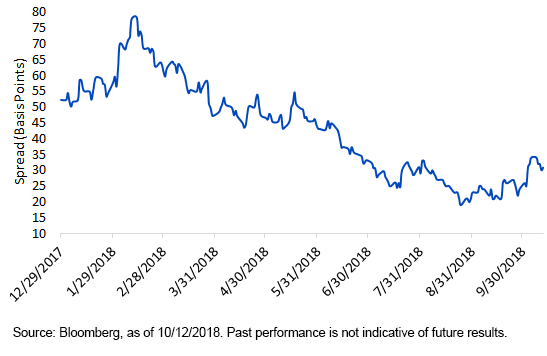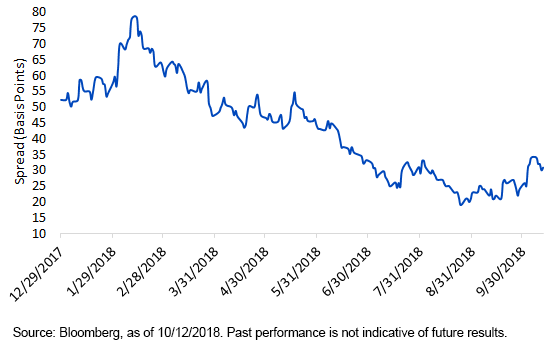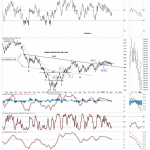Just when everyone thought they had the U.S. Treasury (UST) yield curve all figured out, the unexpected happens. Yes, as the calendar turned to autumn, the Treasury yield construct decided to do a 180 from its predominant flattening pattern—and actually re-steepen. Quite simply, the lesson learned here is that bond market trends do not always move uniformly in one direction. Yes, the overarching theme may remain in place, but getting to that end goal oftentimes entails a curveball (sorry for the pun, but I couldn’t resist).
OK, so where does that leave us? Well, let’s take a look at recent developments and put things into perspective. After hitting a low point of 19 basis points (bps) on August 24, the UST 2-Year vs 10-year spread widened back out to 34 bps just last week, no doubt a by-product of the widely publicized sell-off that was more targeted toward longer-dated maturities. Even with this 15 bps re-steepening UST, 2s/10s still resides at the lowest levels since 2007.
U.S. Treasury 2-Year vs. 10-Year

Does the latest yield curve development mean the flattening trend is over? Interestingly, some of the key reasons why the curve had flattened up until recently are still in place. Key factor number one is the Federal Reserve (Fed). Based on the FOMC’s own projections at its September meeting, the policy makers foresee one more rate hike this year followed by three additional increases in 2019. If the Fed ultimately follows through on this total of four rate hikes, the top of the Fed Funds target range would be 3.25%. Using a historical analysis, the long-term average spread for the UST 2-Year note and the top of the Fed Funds target range is a little more than 30 bps. For reference, this current spread is 60 bps, but typically, as we get closer to the end of a tightening cycle, this differential does tend to narrow. So, assuming the aforementioned 3.25% level for Fed Funds plus the 30 bps long-term mean, the UST 2-Year yield could end up rising to 3.55%.












Leave A Comment